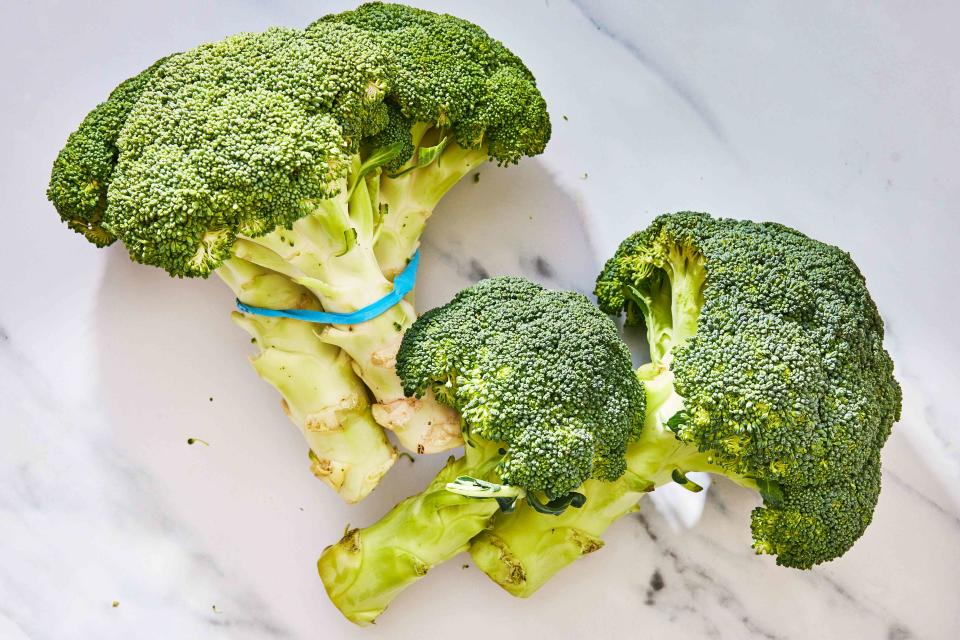How To Clean Broccoli 2 Simple Ways
Why it's important to remove what's lingering in your florets and how to do it quickly.

Caitlin Bensel; Styling: Torie Cox
It might be tempting to bring home fresh produce and start cooking immediately, but take a pause. Making sure every single recipe starts with a clean space—which includes clean produce—is the first step in an important list of kitchen safety tips.
Like other vegetables, broccoli can harbor a host of contaminants.
"It's important to wash any vegetables, as they can carry Salmonella, E. coli, and Listeria,” registered dietitian Chelsea Edwards tells Southern Living. "Not washing your produce increases the risk of one of these foodborne illnesses."
Each year, the Environmental Working Group (EWG) uses the updated data from the Food and Drug Administration (FDA) to develop a guide for consumers that includes the “Dirty Dozen"—a 12-member group of fruits and vegetables that are the most contaminated with pesticides—as well as the "Clean 15," which are items with the lowest amounts of pesticide residues.
The most recent guide includes data from 46,569 samples of 46 fruits and vegetables. While broccoli doesn't land in the EWG’s "Dirty Dozen," it doesn’t land in the "Clean 15" either, making it more important than ever to make sure it's properly cleaned.
Meet Our Expert
Chelsea Edwards is a registered dietitian and the owner of Huntsville Nutrition Collective in Huntsville, Alabama.
How To Clean Broccoli
Broccoli is a member of the cabbage family with a large green head that eventually flowers. It should only be washed prior to cooking and serving to help prolong its shelf life. There are two simple ways to make it happen:
1. Rinse Broccoli Under Running Water
Edwards says the best way to clean broccoli is to run it under cold water after the stem has been trimmed and the head has been cut into florets. This can be done easily by placing florets into a colander.
Related: How Does Broccoli Grow
2. Soak Broccoli In Water
Not sure if you've gotten all the dirt and contaminants off? No problem. Submerge broccoli in a bowl, making sure water covers every floret and let it sit for 2 to 4 minutes.
"Rinse the florets under running water after soaking to remove any lingering particles," Edwards says.
Related: How To Cook Broccoli
Skip Chemical Cleans
No matter which method you choose, it’s important that fruits and vegetables are never washed with detergent or bleach solutions, as many types of fresh produce are porous and could absorb these chemicals.
"The FDA advises against using commercial product washes because the safety of their residues has not been evaluated and their effectiveness has not been tested or standardized," states a guide to washing produce from Colorado State University in partnership with the USDA.
The guide also instructs that "wash water should be no more than 10 degrees colder than produce to prevent the entrance of microorganisms into the stem or blossom end of the produce."
Related: 6 Types of Produce You Should Always Wash But Might Not Be
For more Southern Living news, make sure to sign up for our newsletter!
Read the original article on Southern Living.

